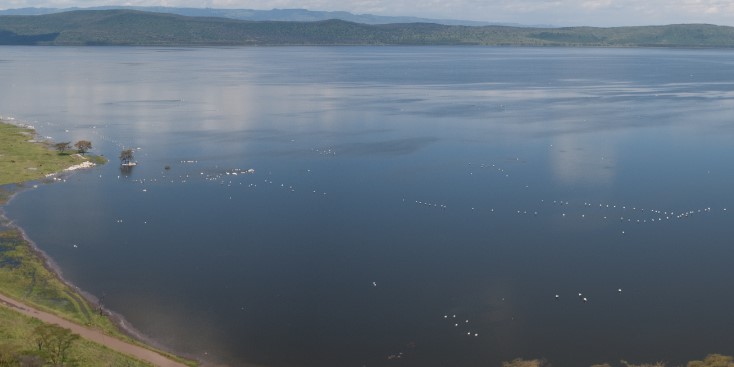The water levels around the Lake Naivasha basin have dropped after all rivers and streams,s flowing into the lake dried up due to the prolonged drought and unregulated abstraction of water in the catchment area.
The drop poses a major threat to nearby towns and planned capital projects around Naivasha with environmentalists warning it could have adverse effects on the planned industrial parks in the Mai Mahiu area.
This comes at a time when stakeholders are calling for a ban on irrigation along streams and tributaries in the Aberdares to save the current situation around Lake Naivasha.
Water Resource Users Association (NAWRUA) National Chairman Enock Kiminta, says there was a need to invest in the catchment which was the main source of water in the basin.
The chairman noted that Lake Naivasha basin was a water-scarce region and the current drought had worsened the situation with all the rivers drying up.
Did you read this?
“The current water shortage could affect the planned capital projects in Naivasha including the industrial parks as they need a lot of water to operate,” he said.
Further, he said the planned construction of dams by the government was timely if proper planning was done and the projects commissioned before the rainy seasons kicked off.
“The drought is an eye-opener in terms of water conservation and dams should come in handy in addressing water demands by the capital projects,” he added
Additionally, he warned families that had encroached on land around the lake that they faced displacement once the heavy rains started.
“The meteorological department is projecting heavy rains in the coming months and this will flood the riparian land around the lake and displace all those who have encroached,” he said.
On his part, Lake Naivasha Basin Landscape Association (LANABLA) chairman, Paul Ruoya blamed the current water crisis for the failure to invest in the catchment area.
He said the planned construction of mega-dams in the Aberdares for use in the capital projects and nearby towns would be futile as rivers in the region continued to dry.









